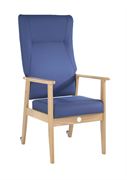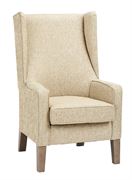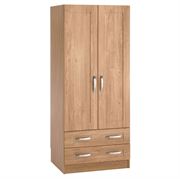Future of Good Care Home Environments
For many people the idea of having to chose a care home a problem for the future. The government is actively thinking of creative ways in which it can provide for an aging population. It is important to consider thinking about and designing the ideal care home environments we want to live in.
A key issue to consider is how future care homes are positioned within the local community. Ideally care homes should be in the very centre of local communities, this helps to serve the interests of friends, care staff, relatives and residents.
This is particularly useful in the instance of dementia residents. Where lack of familiar surroundings can cause greater confusion. Connecting with the local accustomed environment such as shops, transport and entertainment will dampen any confusion. Letting residents sense these surroundings can therefore have a huge positive effect on resident wellbeing.
One attempt is to create a memory or connection to a previous place. some care homes have started naming areas of their buildings after the streets of nearby villages or towns to provide a straight link to where some of the residents had lived.
Care homes need to feel welcoming and friendly – they are often designed following a similar homely style to that of new housing estates. Given the required care infrastructure we will never be able to successfully imitate a true house.
One idea is to consider and study from other style types more appropriate to the place, lives and memories of residents.
One example of a care home turning this idea on its head is the Mornington Nursing home in Australia, which has developed a ‘vision’ of a seaside spa hotel. Providing an imaginative alternative to how we might occupy our later years, and a positive vision of how caring for the more vulnerable people in our society could be.
It is important that care homes be familiar and memorable to residents as well serving their care needs. This is their home. However, unlike a home, the ‘family’ they share it with is likely to be of around 30 to 50 other people; each with their own bedroom but sharing large communal living and dining areas. These large social groups can lead to shared spaces feeling impersonal. Increasingly care home designs seek to address this by breaking up the residential accommodation into smaller blocks believing that this united with smaller lounges creates a more homely impression and the chance for healthier interaction within reduced groups.
A care home in Edinburgh has recently done this by setting up a ‘street’ and several ‘houses’. The ‘street’ comprises all the staff and service areas with a day centre at the entrance. From the ‘street’ each ‘house’ is accessed through a little lounge area with kitchen and dining services located at the centre.
This breaking down of the large building into smaller units provides further design opportunities where smaller portions of the care home are spread around a more densely populated urban fabric. This upholds greater connections to secure outdoor spaces – smaller intimate courtyards and the bigger landscape.
Our team will bring expert design and product knowledge to your project, listening to your requirements and working closely with you to develop exactly the right solution for each project.⠀Contact us here



















